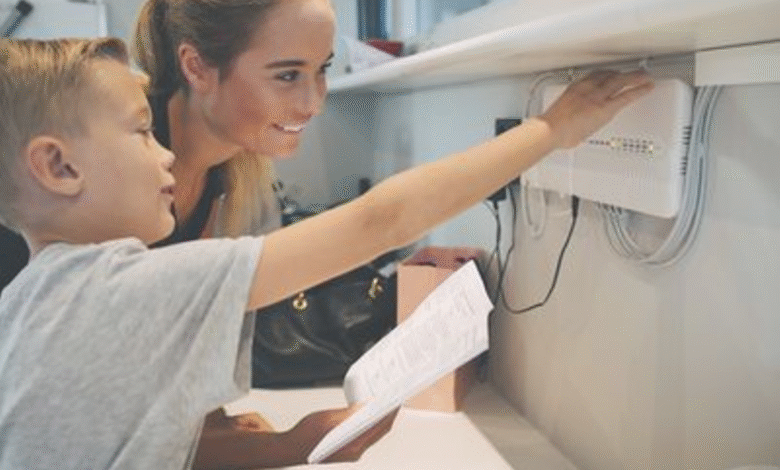How to Speed Up Your Slow Wi-Fi Connection at Home
Learn how to speed up your slow Wi-Fi connection at home with these expert tips. Boost signal and optimize router settings for faster internet.

If you’re struggling with a sluggish internet connection, learning how to speed up your slow Wi-Fi connection at home can transform your online experience. Few things are more frustrating than buffering videos, dropped Zoom calls, or web pages that take forever to load especially when you’re paying for high-speed internet. The good news is that many Wi-Fi issues can be resolved with simple tweaks to your router settings, equipment upgrades, or smarter network management.
A slow Wi-Fi connection can stem from various factors, including outdated hardware, interference from other devices, poor router placement, or even bandwidth-hogging applications. By optimizing your home network, you can enjoy faster speeds, smoother streaming, and more reliable connectivity for all your devices. This will walk you through practical, effective solutions from basic fixes to advanced adjustments so you can maximize your Wi-Fi performance without needing professional help. Whether you’re working from home, gaming online, or just browsing, these tips will help you get the most out of your Wi-Fi Connection.
How to Speed Up Your Slow Wi-Fi Connection at Home
Understanding the Causes of Slow Wi-Fi
Before diving into solutions, it’s essential to understand why your Wi-Fi Connection might be underperforming. One of the most common culprits is network congestion. If multiple devices are connected simultaneously smartphones, laptops, smart TVs, and smart home gadgets your router may struggle to distribute bandwidth efficiently. Additionally, physical obstructions like walls, furniture, and even appliances can weaken your Wi-Fi signal. Older routers that don’t support modern Wi-Fi standards (such as Wi-Fi 6) can also bottleneck your connection. Even your internet plan plays a role; if your subscribed speed doesn’t match your household’s demands, you’ll experience lag.
Optimizing Router Placement
One of the simplest yet most effective ways to speed up your slow Wi-Fi connection is to reposition your router. Wi-Fi signals radiate outward from the router, so placing it in a central location ensures better coverage throughout your home. Avoid tucking it inside a cabinet, behind large furniture, or near thick walls, as these can block or weaken the signal. Elevating the router such as mounting it on a wall or placing it on a high shelf can also improve range since Wi-Fi signals travel slightly downward. If your home has multiple floors, consider positioning the router on the middle level to evenly distribute coverage. Additionally, keep the router away from electronic devices that emit electromagnetic interference, such as microwaves, Bluetooth speakers, and baby monitors.
Upgrading Your Router
If your router is more than a few years old, it might be time for an upgrade. Older models often lack the latest Wi-Fi standards, such as Wi-Fi 6 (802.11ax), which offers faster speeds, better performance in crowded networks, and improved battery life for connected devices. Dual-band or tri-band routers can also help by distributing traffic across multiple frequencies, reducing congestion. Look for features like MU-MIMO (Multi-User, Multiple Input, Multiple Output), which allows the router to communicate with multiple devices simultaneously, and beamforming, which directs the signal toward Wi-Fi Connection devices rather than broadcasting it uniformly. Investing in a modern router can dramatically enhance your network’s speed and stability.
Securing Your Network
An unsecured Wi-Fi network can lead to unauthorized users hogging your bandwidth, slowing down your connection. Ensure your network is password-protected with WPA3 encryption, the latest and most secure standard. Avoid using weak or default passwords, as these are easy for hackers to crack. Regularly check connected devices in your router’s admin panel to identify unfamiliar users. Another security measure is disabling WPS (Wi-Fi Protected Setup), which can be vulnerable to brute-force attacks. Enabling a guest network for visitors can also prevent them from accessing your primary network, reducing unnecessary traffic.
Limiting Bandwidth-Heavy Applications
Some applications, such as video streaming, online gaming, and large file downloads, consume significant bandwidth. If multiple users are engaging in these activities simultaneously, your Wi-Fi Connection may slow down. Many modern routers offer Quality of Service (QoS) settings, which allow you to prioritize specific devices or applications. For example, you can give video calls higher priority over file downloads to prevent lag during meetings. Another strategy is scheduling heavy downloads during off-peak hours when network traffic is lower. Parents can also set up parental controls to limit children’s device usage during critical work hours. Managing bandwidth allocation ensures that essential tasks get the speed they need without unnecessary interruptions.
Adjusting Wi-Fi Channels and Frequencies
Most routers operate on either the 2.4 GHz or 5 GHz frequency bands. The 2.4 GHz band offers wider coverage but is more prone to interference, while the 5 GHz band provides faster speeds with less congestion but has a shorter range. If your devices support it, connecting to the 5 GHz band can significantly improve speed. Additionally, routers automatically select a Wi-Fi channel, but this isn’t always optimal. Using tools like Wi-Fi Analyzer (for Windows) or NetSpot (for Mac), you can identify the least congested channels in your area and manually switch to them in your router’s settings. For 2.4 GHz, channels 1, 6, and 11 are typically the best choices since they don’t overlap.
Using Ethernet for Critical Devices
While Wi-Fi is convenient, a wired Ethernet connection provides faster and more stable internet access. Devices that require high bandwidth, such as gaming consoles, desktop computers, and smart TVs, benefit greatly from a direct connection. Ethernet eliminates interference and latency issues associated with wireless signals. If running cables isn’t feasible, Powerline adapters can be an alternative. These devices use your home’s electrical wiring to transmit internet signals, offering a more reliable connection than Wi-Fi in some cases. For optimal performance, reserve wired connections for high-priority devices and use Wi-Fi for others.
Reducing Connected Devices
The more devices connected to your network, the more strain is placed on your router. Smart home gadgets, tablets, and even idle smartphones can contribute to slower speeds. Disconnecting unused devices or enabling auto-sleep modes can free up bandwidth. Consider creating a separate network for IoT (Internet of Things) devices to prevent them from interfering with primary tasks like streaming or video calls. Some routers allow you to set up device quotas, limiting how much data specific gadgets can use. Streamlining your connected devices can lead to noticeable improvements in speed.
Contacting Your Internet Service Provider (ISP)
If you’ve tried all the above steps and still experience slow speeds, the issue may lie with your ISP. Run a speed test (using websites like Speedtest.net) to compare your actual speeds with the plan you’re paying for. If there’s a significant discrepancy, contact your provider to troubleshoot. Sometimes, the problem could be outdated infrastructure in your area, or you may need to upgrade to a higher-speed plan. ISPs can also check for line issues or reset your connection remotely. If poor service persists, consider switching to a more reliable provider with better coverage in your location.
Read More: How Small Businesses in the U.S. Can Grow With SEO
Conclusion
By implementing these strategies on how to speed up your slow Wi-Fi connection at home, you can significantly enhance your internet experience without expensive upgrades or professional help. From optimizing your router placement and upgrading outdated equipment to managing connected devices and adjusting network settings, each solution contributes to a faster, more reliable connection. Remember that small changes like switching to a less congested Wi-Fi channel or enabling Quality of Service (QoS) can make a big difference in your daily browsing, streaming, and gaming.
If you’ve tried all these fixes and still experience sluggish speeds, it may be time to Wi-Fi Connection your internet service provider (ISP) to check for outages or plan upgrades. A well-optimized Wi-Fi network not only eliminates frustration but also maximizes the value of your internet subscription. With consistent maintenance and smart adjustments, you can enjoy seamless connectivity for all your online activities, ensuring smooth performance whether you’re working, learning, or relaxing at home.
FAQs
Why is my Wi-Fi Connection so slow even with a good router?
Slow Wi-Fi Connection can result from interference, too many connected devices, or an outdated internet plan. Check for signal obstructions and limit bandwidth-heavy activities.
Does resetting the router improve speed?
Yes, rebooting your router can clear temporary glitches and improve performance. For long-term fixes, consider firmware updates or a router upgrade.
How can I tell if my ISP is throttling my speed?
Run multiple speed tests at different times. If speeds are consistently below what you’re paying for, contact your ISP to investigate.
Is 5 GHz Wi-Fi Connection always better than 2.4 GHz?
5 GHz offers faster speeds with less interference but has a shorter range. Use 2.4 GHz for wider coverage and 5 GHz for high-bandwidth activities.
Can too many devices slow down Wi-Fi Connection?
Yes, each Wi-Fi Connection device shares bandwidth. Disconnect unused gadgets or upgrade to a router with better multi-device handling capabilities.










